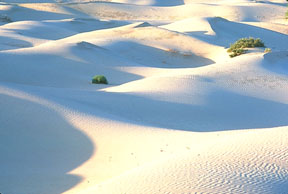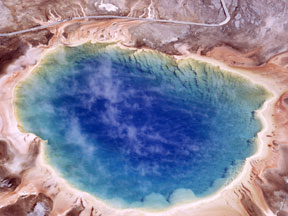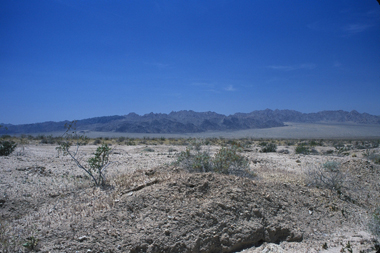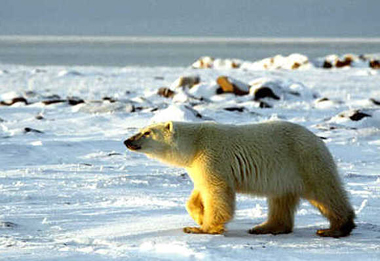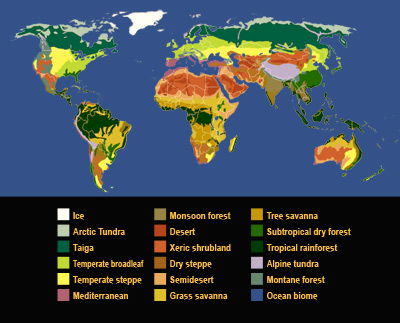Click on image for full size
Extreme Environments - Temperature and Moisture
This page describes environments that are very hot or very cold, extremely dry, or both. Extreme environments are places that are inhospitable to most "normal" living creatures. Extreme environments are not necessarily lifeless. Certain types of organisms, known collectively as "extremophiles", have adapted to survive or even thrive in various types of extreme environments.
Familiar extreme environments include deserts, mountain peaks, caves, and the frozen realms of the Arctic and Antarctic. Some extreme environments are acidic or alkaline, are exposed to high levels of radiation, are under tremendous pressure, or are otherwise hostile to "normal" life.
Many environments are too hot or cold for most living creatures. The extreme heat of deserts like the Sahara in Africa and Death Valley in North America makes survival challenging in such locales. Less familiar hot environments include the scalding waters that issue forth from hydrothermal vents in the ocean floor and from geysers and hot springs in places like Yellowstone National Park in the USA.
On the other end of the scale, extremely cold environments can also be hostile to most life forms. This of course includes the ice caps, snow fields, and sea ice found in the Arctic and Antarctic, as well as similarly chilly niches high on mountaintops worldwide. The deep oceans are also quite cold; temperatures in the 90% of ocean water that lies beneath the thermocline hover between 0° and 4° C (32° and 39° F).
Water shortages can also make it difficult for life to get by. Deserts are famously dry, though not all of them are hot. Antarctica is actually Earth's largest desert, and the Dry Valleys there are among the driest places on our planet. Some locations in Chile's Atacama Desert receive less than 1 millimeter (0.04 inch) of rainfall per year on average, and can go decades without any rain at all.


